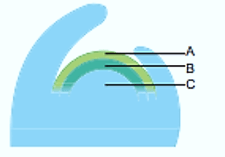EASY
Earn 100
What is tissue ?
Important Questions on Anatomy of Flowering Plants
EASY
MEDIUM
EASY
HARD
Which of the following are the characteristic features of phloem?
i) Gymnosperms have albuminous cells and sieve cells
ii) Presence of tracheids
iii) They store food materials in the form of starch or fat
iv) They have sieve tube elements that are long, tube-like structures
v) Their end walls are perforated in a sieve like manner
The correct combination is
EASY
EASY
EASY
EASY
EASY
MEDIUM

i. A, B, and C are histogen of the shoot apex
ii. A Gives rise to medullary rays.
iii. B Gives rise to cortex
iv. C Gives rise to epidermis
EASY
EASY
EASY
EASY
HARD
| Column I | Column II | ||
| A. | Histogen theory | 1. | Nageli |
| B. | Tunica corpus theory | 2. | Schmidt |
| C. | Apical cell theory | 3. | Hanstein |
| D. | Tissue | 4. | Grew |
EASY
Ground tissues includes
MEDIUM
The tissue is a group of cells that:
(a) Have a common origin.
(b) Are always structurally similar.
(c) Perform a common function.
MEDIUM
Non-cyclic photo-phosphorylation differs from cyclic photo-phosphorylation in that former
EASY
EASY
The correct sequence of levels of organisation present in the body of evolved plants is
A. Cells
B. Organs
C. Tissue system
D. Tissue

